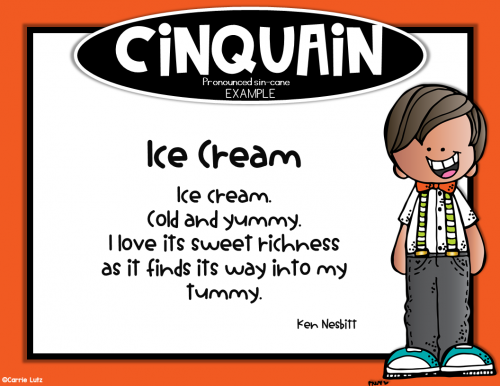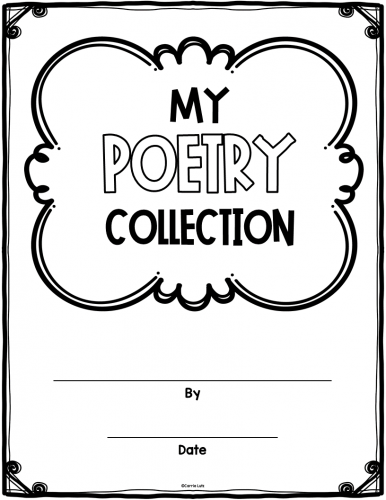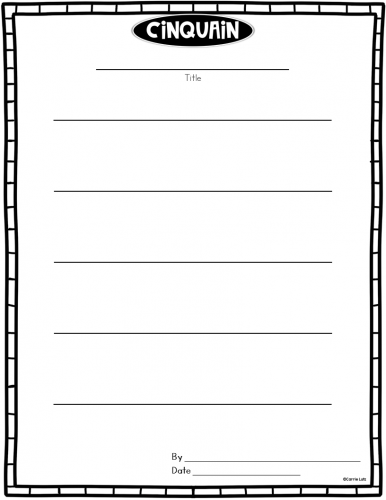First grade poetry writing can be such a fun and creative exercise and with these great templates and posters, it makes for a great classroom activity.

First Graders love writing poetry… Most of the time
Kids love to write poetry as long as there aren’t too many rules that they don’t understand. Most teachers don’t like first grade poetry writing for this very reason. I totally get it. Some students have a very difficult time with poetry that has complicated formats that must be followed in order to create the poem. However, these same students will do better when left to create poetry with no formats, just creative writing!
First Grade Poetry Writing Resources??? Where are they?
Generally speaking, schools do not provide resources to teach the elements of poetry that are outlined in their district’s poetry objectives. This means that teachers are left scrambling, trying to find resources that fit or even worse, trying to make them themselves. Like they don’t have enough to do already!

What First Grade Students Need for Poetry Writing Success
For your students to be successful, certain types of poetry need to be modeled, examples given, and a key for how to pronounce the poem type. The examples given also need to be at their fingertips when they begin writing their own.
Here’s a list of poems that need a lot of modeling of the format, example poems and a pronunciation key:
- Cinquain (sin-cane)
- Diamante (dee-uh-MAHN-tay)
- Haiku (hi-koo)
Less hard to pronounce but need format modeling and templates
- Bio Poem
- Sensory Poem
Helpful Poetry Writing Resources
As a teacher, I couldn’t find the resources that I needed and finally created my own. I wanted resources that focused on the following and here’s what I came up with:
I wanted a resource with:
- Definition Posters
- Example Poems
- Pronunciation Key
- Planning Sheet – With the Example Poem included
- A Final Draft Writing Templates.
- Final Booklet to show Poetry to Parents
Here’s what Naturally Elementary had to say about this resource:
“LOVING this simple Poetry unit! My firsties have been rocking the poetry writing the past couple weeks! I love the planning & publishing pages! & the posters make it so simple to teach!
The 5-Step First Grade Poetry Writing Process
1. Start with the definition of the poem you are teaching. Discuss the pronunciation, since some are not phonetic.
2. Give an example of the poem and ask the students if they notice anything about it (rhythm, rhyme, etc.).
3. Show the format in which the poem was written. Discuss in detail. Introduce or revisit terms such as syllable, verb or action word, etc. Discuss the example poem to show how it follows the format.
4. Project or recreate a planning sheet on a large piece of chart paper. Model writing a poem as a class, from start to finish. Have a simple kid-friendly subject ready with some ideas for the format, just in case your students can’t come up with anything. Refer back to the example poem to help them learn the format. Notice how this planning sheet provides the FORMAT and the EXAMPLE POEM. This is very helpful when kids who are struggling to get anything on the paper. I would have the class fill this in with me as we write the poem together. This will provide 100% engagement.
5. After the planning sheet is complete, move to The Final Draft – Project or recreate the final draft sheet. Rewrite the poem from the planning sheet, onto the writing template. Notice how it doesn’t have any of the format ideas. I would give each student a final draft sheet and have them do this with me. This could be the first poem in their poetry book. By Mrs. _______’s Class instead of their name.
More about this First Grade Poetry Writing Resource
There are Seven Poem types covered in this resource:
- Acrostic
- Bio Poem
- Cinquain
- Dimante
- Haiku
- Sensory Poem
- Shape Poem (Concrete Poem)
All of the posters are designed in black and white.

Included: Small posters for Students’ Poetry Notebook, so they can look back when necessary.
Table of Contents pages for poetry booklet. Two versions – seven lines or create your own in case you don’t want to do all seven poems.
Cut and paste lines onto blank page.


For writing more or less than 7 Poems. Fill in one line for each poem created. Paste onto the blank page.

Blank Table of Contents – Students will write on the “Create a Table of Contents” page. Then cut and paste the titles onto this page.
More Great Poetry Resources:

Don’t forget to pin the image below to your Teaching Resources Pinterest board for future reference.
Have an amazing year!
~ Carrie












Leave a Reply